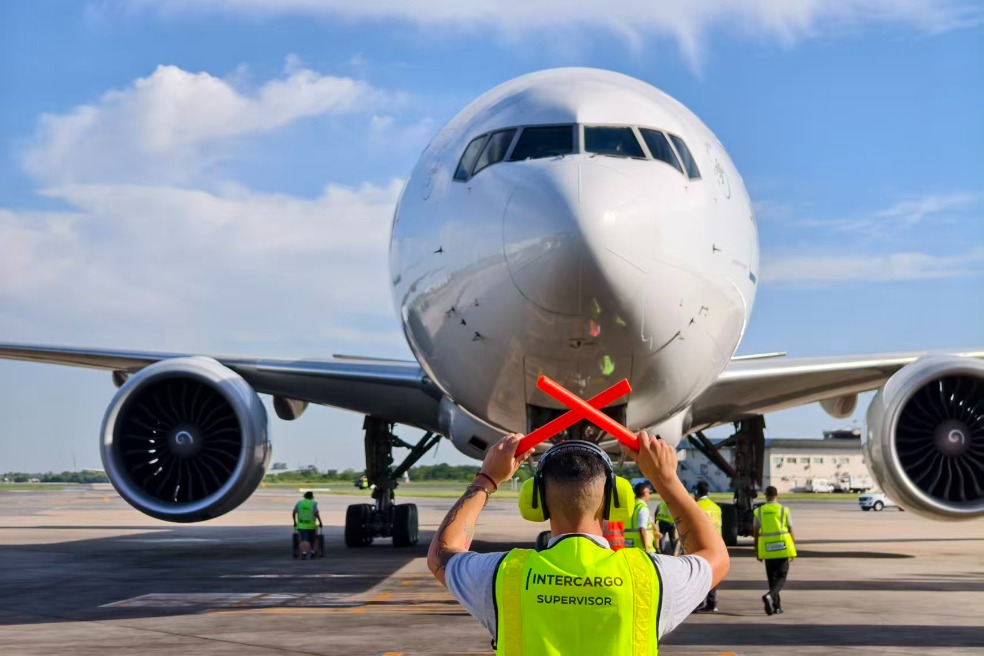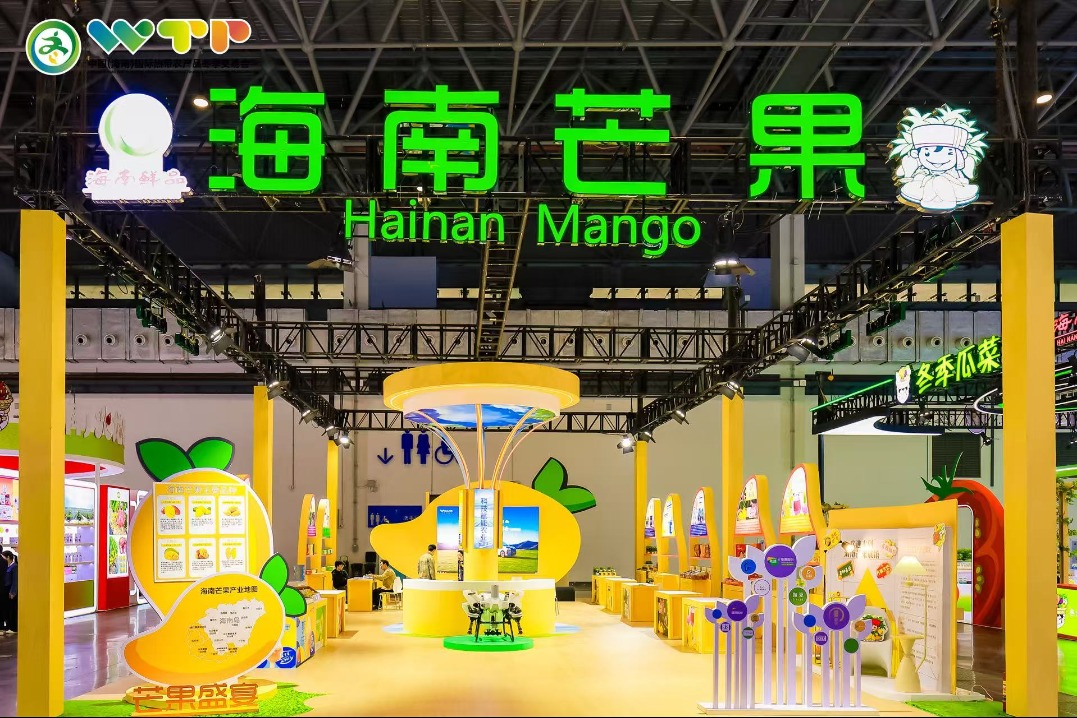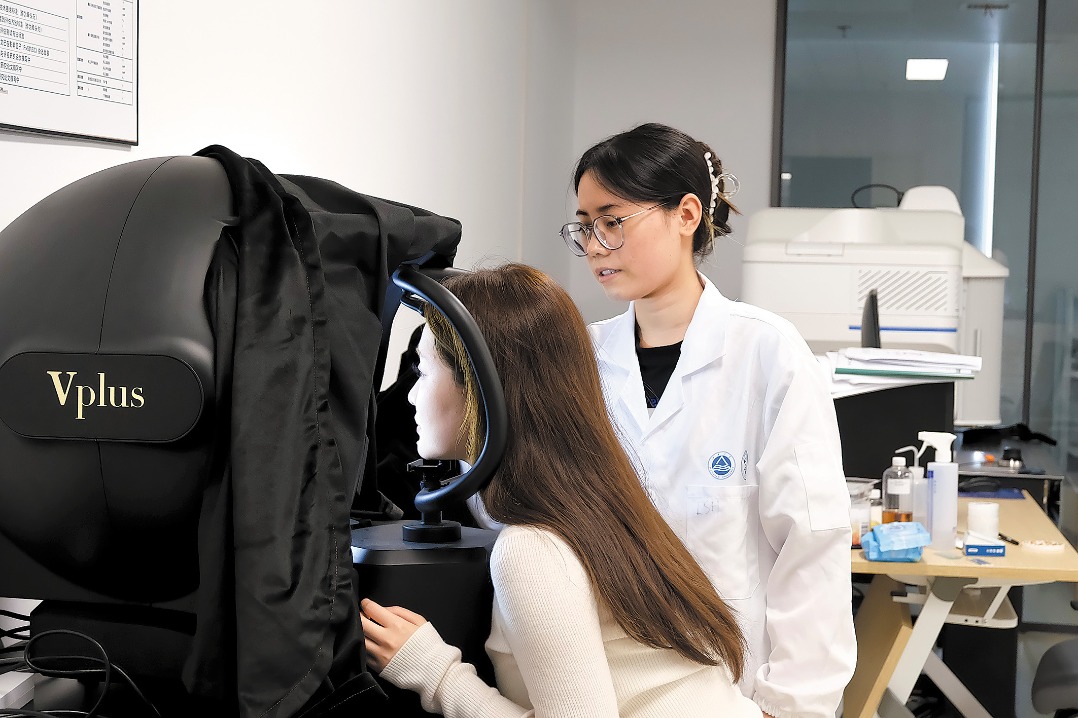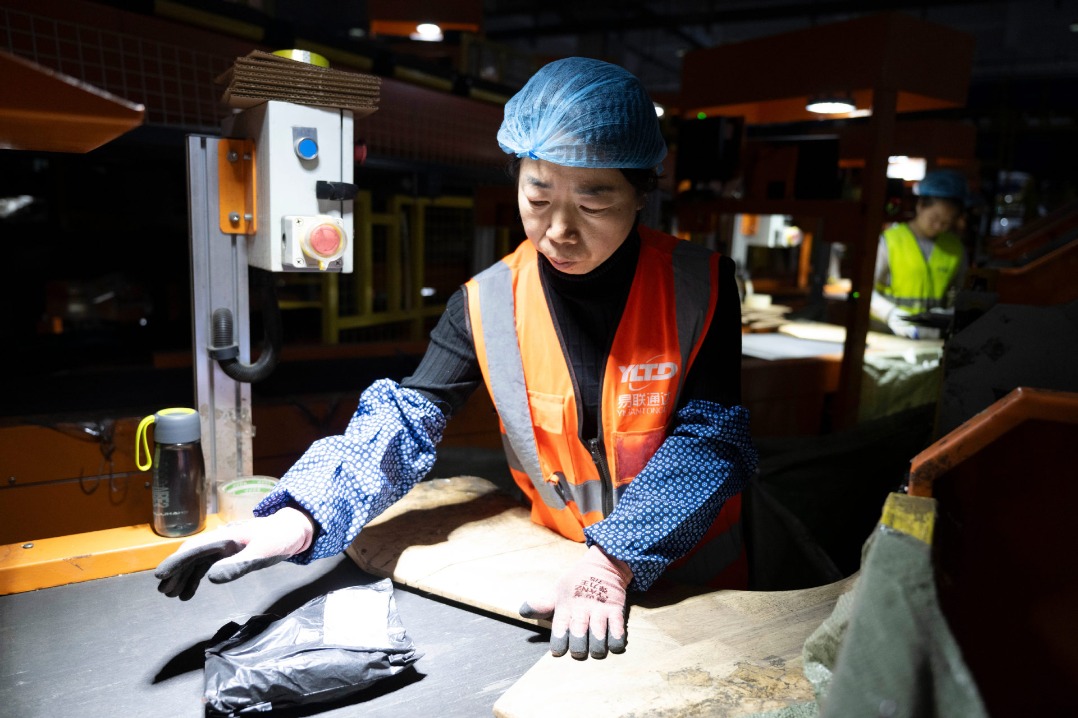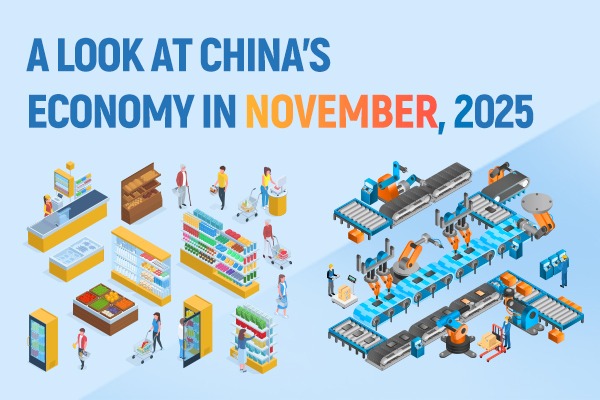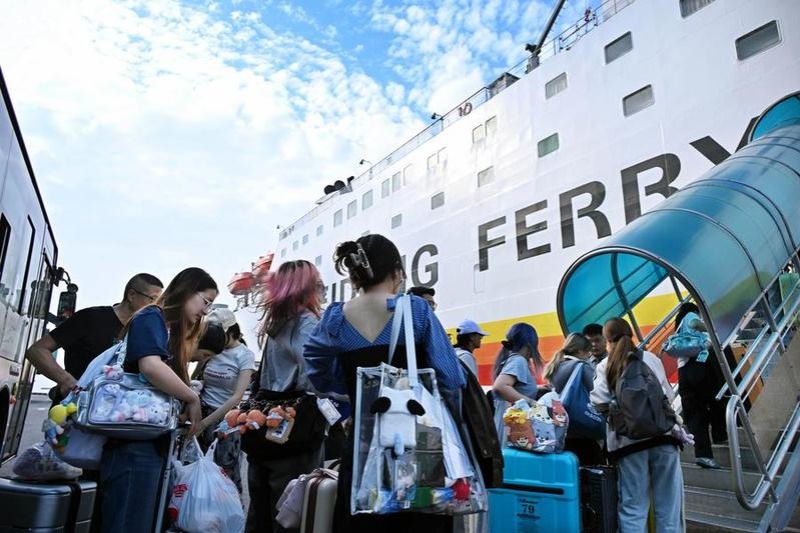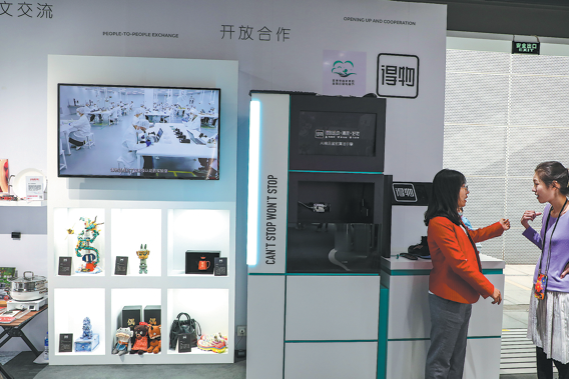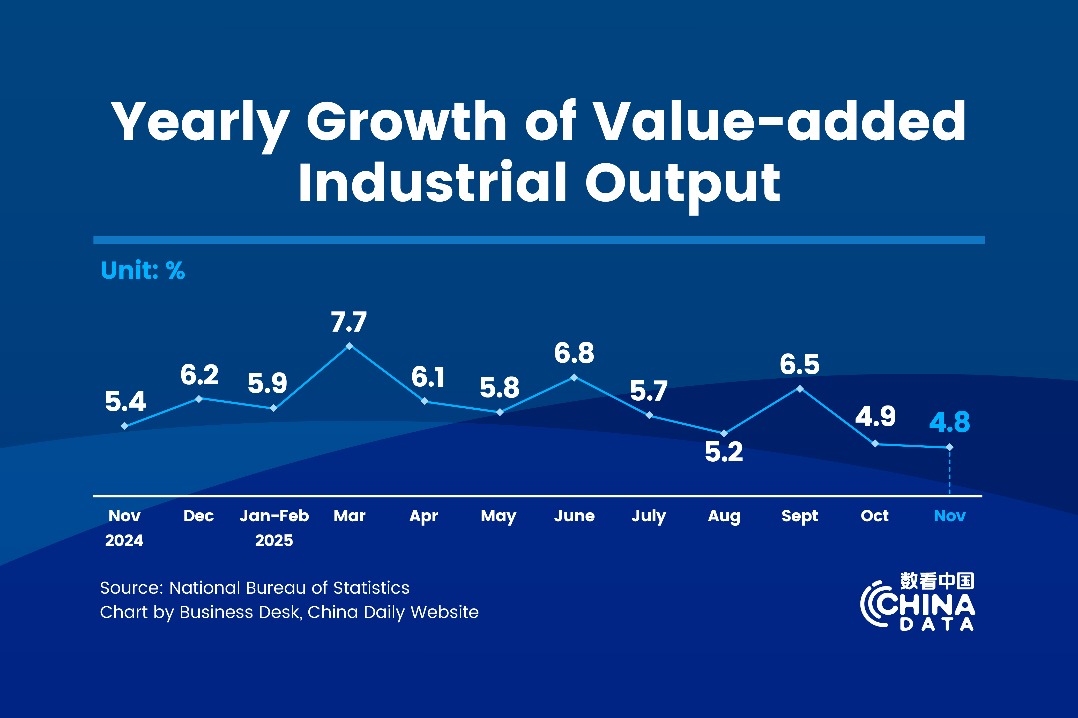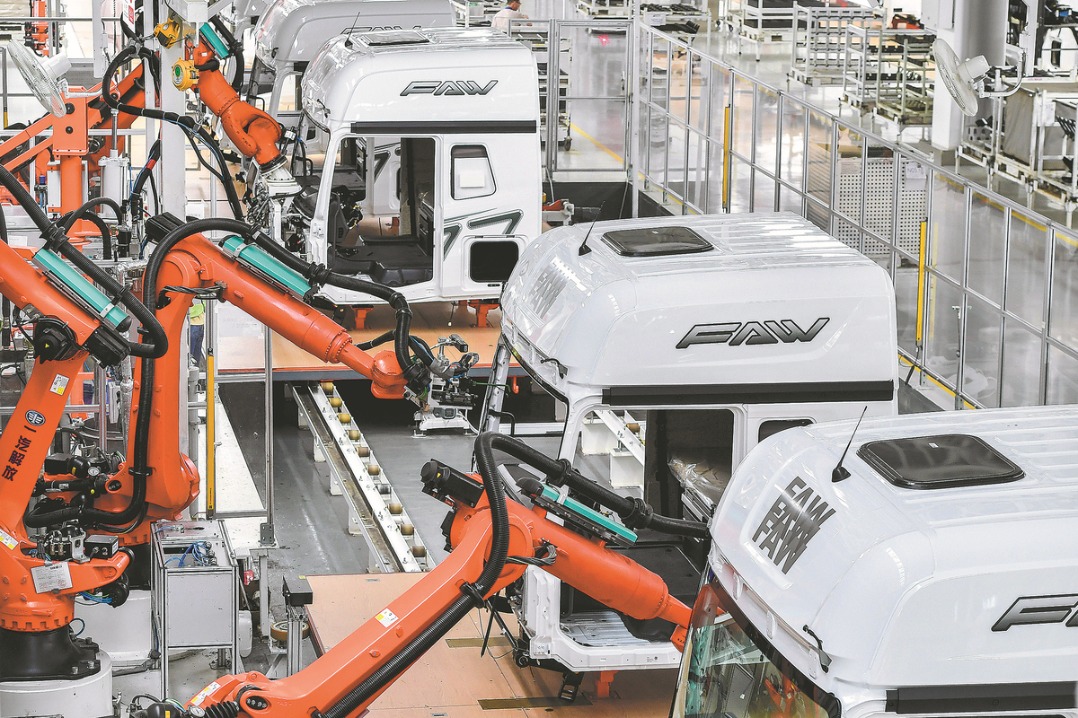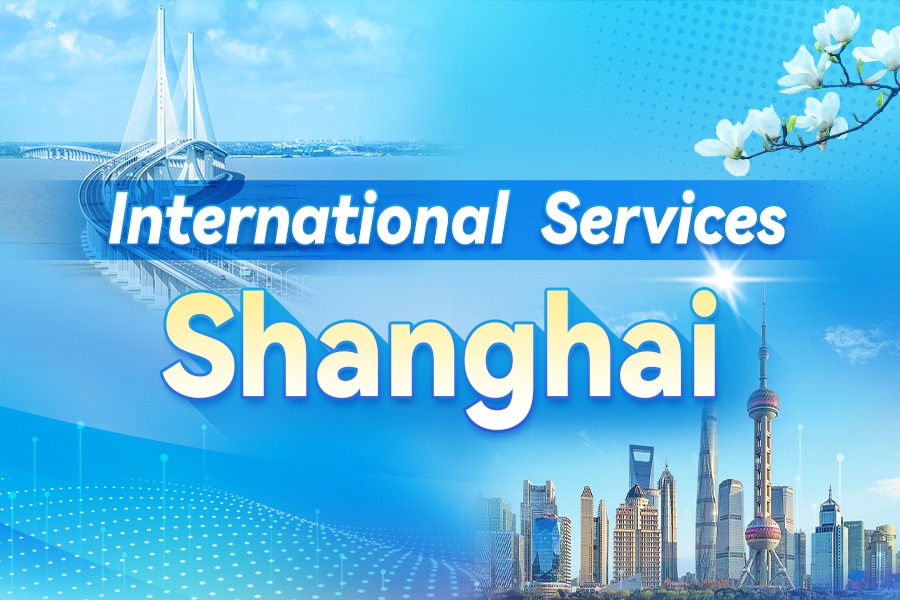Future bright for low-carbon vessels

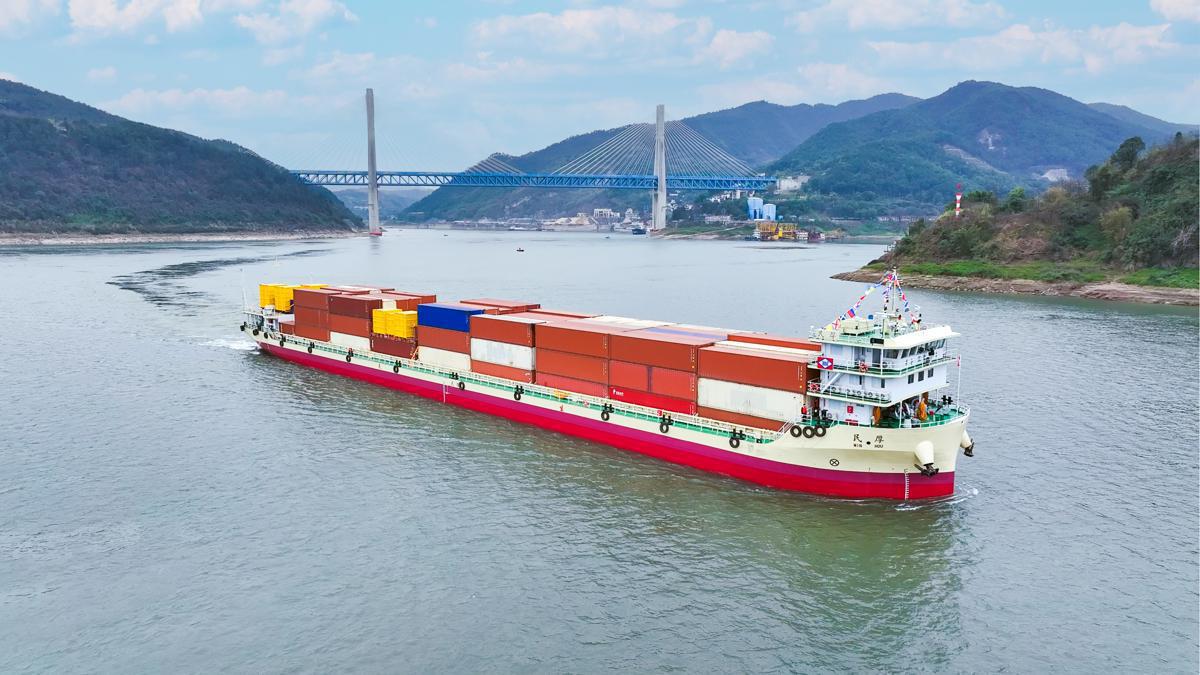
At 10:46 am on Saturday, a significant milestone was reached in China's inland waterway transportation history as Minhou, a new 130-type methanol-diesel dual-fuel distribution vessel, arrived at Chongqing Guoyuan Port from Shanghai.
The ship's maiden voyage marked China's entry into methanol-diesel dual-fuel distribution vessels, paving the way for greener and more low-carbon inland waterway vessels in the country.
It is also the first inland vessel in China equipped for flexible loading between standard and wide containers, enabling seamless transfer of wide containers from railways directly onto inland vessels, thus advancing intermodal transportation.
Built by Chongqing-headquartered Minsheng Industrial (Group) Co, the vessel carried 395 standard containers loaded with a range of goods like chemical raw materials and automotive parts.
According to the group, China's inland clean energy vessels mainly consist of electric ships and LNG-powered vessels currently, and lack methanol vessels.
In a bid to enhance and modernize the logistics system in Chongqing and bolster high-quality development in the Yangtze River Economic Belt, the company said it will expand the city's fleet of eco-friendly shipping vessels by introducing three additional vessels of the same type this year.
Hailed as a major economic engine, the Yangtze River Economic Belt, covering nine provinces and two municipalities, accounts for more than 40 percent of both the country's population and GDP.
Chongqing, a municipality of 32 million people, is a major industrial base of China and boasts 80 percent of the cargo throughput of the entire upper reaches of the Yangtze River.
According to Feng Wurong, director of the machinery department of Minsheng (Chongqing) Shipping Branch, Minhou has a total length of 129.97 meters, a width of 16.26 meters, a depth of 6.6 meters, a draft of 4.6 meters, and a maximum container capacity of 440 TEUs (twenty-foot equivalent units).
Feng said that in addition to various innovative design optimizations aimed at enhancing operational efficiency, the vessel stands out for its environmental performance due to its use of methanol as fuel.
Methanol combustion does not generate sulfur oxides and is less prone to forming particulate matter. Furthermore, its low-temperature combustion properties contribute to a reduction in nitrogen oxide emissions.
Compared to traditional pure diesel-powered vessels, methanol clean energy-powered vessels emit approximately 96 percent less carbon monoxide and 99 percent less hydrocarbons, with smoke emissions reduced by about 54 percent, Feng said.
Last year, the Ministry of Transport announced the first batch of tasks for constructing a clean-and-low-carbon transportation powerhouse, and Minsheng's inland methanol vessel promotion demonstration project was included.
















